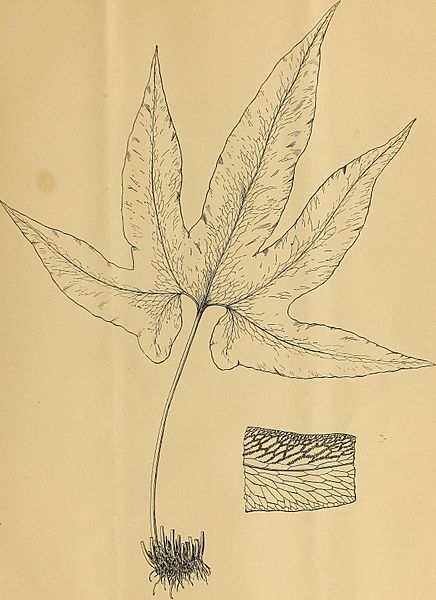Image: Garden and forest; a journal of horticulture, landscape art and forestry (1891) (14784131045)

Description: Identifier: gardenforestjour41891sarg (find matches) Title: Garden and forest; a journal of horticulture, landscape art and forestry Year: 1888 (1880s) Authors: Sargent, Charles Sprague, 1841-1927 Subjects: Botany Gardening Forests and forestry Publisher: New York : The Garden and forest publishing co. Contributing Library: Smithsonian Libraries Digitizing Sponsor: Biodiversity Heritage Library View Book Page: Book Viewer About This Book: Catalog Entry View All Images: All Images From Book Click here to view book online to see this illustration in context in a browseable online version of this book. Text Appearing Before Image: erfumed the air with their delightful fragrance. The stoutestbranches of the Oaks were literally loaded, and it was a pleas-ure to see the profusion of flowers produced by these plants,a single spike bearing upward of thirty expanded flowers.During several days march we noticed that all the Oak-treeswere clothed in this way by this same Orchid, which flowersthe more freely when it is exposed to the direct rays of the sun. A somewhat novel feature in this establishment is that manyof the New Granadan Odontoglossums are planted out in pre-pared beds of fibrous peat, and they evidently like it, for eachnew pseudo-bulb is much stronger than the preceding one,and on some of the plants being pulled up they presentedquite a mass of healthy roots. In this way small pieces aregrown into vigorous plants, and many of them are producingstrong flower-spikes. Most of the best species and varietiesare grown in quantity, at least 75,000 plants being in stock. October 14, 1891.) Garden and Forest. 485 Text Appearing After Image: Fig- 75.—Hemionitis elegans.—See page 484. 486 Garden and Forest. (Number 190. The number of Cattleyas and Laelias in stock is esti-mated at over 50,000. Cypripediums, Dendrobiums, Vandas,Coelogynes, Lycastes, Phakenopses, Angracums, Masdevalliasand other popular garden genera are also grown in immensequantities. At all seasons of the year there is much of interest to beseen here, and a visit during the comparatively dull season ofAugust proved no exception to the rule. Many species andhybrids of Cypripedium were in bloom, including the chastelittle C. niveum, C. tonsum, C. Parishii, C. Curtisii, alsoC. X picturatum, C. X Javanico-superbiefis, C. X Hornianum,C. < To, C. x vexillarium and many others, some of them inquantity; also C. X Maynardi and C. X Pollettianum, two verytine ones raised in the establishment, which have recently re-ceived awards at the hands of the Royal Horticultural Society,and which, together with the equally beautiful C. x Castlea-nitin, are to be figure Note About Images Please note that these images are extracted from scanned page images that may have been digitally enhanced for readability - coloration and appearance of these illustrations may not perfectly resemble the original work.
Title: Garden and forest; a journal of horticulture, landscape art and forestry (1891) (14784131045)
Credit: https://www.flickr.com/photos/internetarchivebookimages/14784131045/ Source book page: https://archive.org/stream/gardenforestjour41891sarg/gardenforestjour41891sarg#page/n500/mode/1up
Author: Sargent, Charles Sprague, 1841-1927
Permission: At the time of upload, the image license was automatically confirmed using the Flickr API. For more information see Flickr API detail.
Usage Terms: No known copyright restrictions
License: No restrictions
License Link: https://www.flickr.com/commons/usage/
Attribution Required?: No
Image usage
The following page links to this image:

